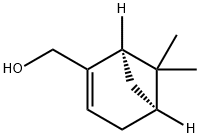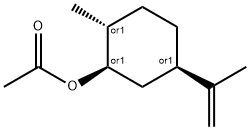1-HEPTENE
Synonym(s):1-Heptene
- CAS NO.:592-76-7
- Empirical Formula: C7H14
- Molecular Weight: 98.19
- MDL number: MFCD00009531
- EINECS: 209-767-8
- SAFETY DATA SHEET (SDS)
- Update Date: 2024-12-18 14:15:30

What is 1-HEPTENE?
Description
Heptene is a colorless liquid with a mild, gaso-line-like odor. Molecular weight = 98.21;Boilingpoint= 94℃;Flashpoint≤0℃; Autoignitiontemperature = 260℃.Explosivelimits:LEL= 1.0%;UEL- -unknown. Hazard Identification (based on NFPA-704 M Rating System): Health 0, Flammability 3,Reactivity 0. Insoluble in water.
Chemical properties
clear colorless liquid
Chemical properties
Heptene is a colorless liquid. Mild, gasoline like odor.
Chemical properties
1-Heptene is a colorless, highly flammable liquid with specific gravity 0.697.
The Uses of 1-HEPTENE
1-Heptene can be used as a reactant for the gold(I)-catalyzed stereoselective olefin cyclopropanation of alkenes. Also it is a volatile organic compound which acts as a pollutant in the atmosphere.
The Uses of 1-HEPTENE
Organic synthesis.
Production Methods
Heptene is produced in a process involving the oligomerization of ethene in the presence of aluminum alkyls.
Definition
ChEBI: 1-Heptene is a hydrocarbon.
Synthesis Reference(s)
Journal of the American Chemical Society, 101, p. 5414, 1979 DOI: 10.1021/ja00512a051
Tetrahedron Letters, 31, p. 7115, 1990 DOI: 10.1016/S0040-4039(00)97255-1
Synthetic Communications, 17, p. 969, 1987 DOI: 10.1080/00397918708063955
General Description
The liquid phase alkylation of toluene with 1-heptene has been investigated over a HFAU zeolite.
Hazard
Flammable, dangerous fire risk.
Health Hazard
Recommended Personal Protective Equipment: Safety goggles or face shield; Symptoms Following Exposure: High concentrations may produce slight irritation of eyes and respiratory tract; also acts as simple asphyxiant and slight anesthetic; General Treatment for Exposure: Remove from exposure. Administer artificial respirator if needed; Toxicity by Inhalation: Data not available; Short-Term Inhalation Limits: Data not available; Toxicity by Ingestion: Data not available; Late Toxicity: Data not available; Vapor (Gas) Irritant Characteristics: Vapors cause a slight smarting of the eyes or respiratory system if present in high concentrations. Effects are temporary; Liquid or Solid Irritant Characteristics: Minimum hazard. If spilled on clothing and allowed to remain, may cause smarting and reddening of the skin; Odor Threshold: Data not available.
Chemical Reactivity
Reactivity with Water No reaction; Reactivity with Common Materials: No reactions; Stability During Transport: Stable; Neutralizing Agents for Acids and Caustics: Not pertinent; Polymerization: Not pertinent; Inhibitor of Polymerization: Not pertinent.
Potential Exposure
A potential danger to those involved in use as a plant growth retardant or in organic synthesis.
First aid
If this chemical gets into the eyes, remove anycontact lenses at once and irrigate immediately for at least15 min, occasionally lifting upper and lower lids. Seek med-ical attention immediately. If this chemical contacts theskin, remove contaminated clothing and wash immediately with soap and water. Seek medical attention immediately. Ifthis chemical has been inhaled, remove from exposure,begin rescue breathing (using universal precautions, includ-ing resuscitation mask) if breathing has stopped and CPR ifheart action has stopped. Transfer promptly to a medicalfacility. When this chemical has been swallowed, get medi-cal attention. Give large quantities of water and induce :vomiting. Do not make an unconscious person vomit.
storage
Color Code- Red: Flammability Hazard: Store ina flammable liquid storage area or approved cabinet awayfrom ignition sources and corrosive and reactive materials.Prior to working with heptene you should be trained on itsproper handling and storage. Before entering confined spacewhere heptene may be present, check to make sure that anexplosive concentration does not exist. Store in tightlyclosed containers in a cool, well-venti lated area away fromoxidizers. Metal containers involving the transfer of thischemical should be grounded and bonded. Where possible,automatically pump liquid from drums or other storage con-tainers to process containers. Drums must be equipped withself-closing valves, pressure vacuum bungs, and flamearresters. Use only nonsparking tools and equipment, espe-cially when opening and closing containers of this chemi-cal. Sources of ignition, such as smoking and open flames,are prohibited where this chemical is used, handled, orstored in a manner that could create a potential fire orexplosion hazard. Wherever this chemical is used, handled,manufactured, or stored, use explosion-proof e lectricalequipment and fittings.
Shipping
UN2278 n-Heptene, Hazard Class: 3; Labels: 3-Flammable liquid.
Purification Methods
Distil hept-1-ene from sodium, then carefully distil it fractionally using an 18-in gauze-packed column. It can also be purified by azeotropic distillation with EtOH. It usually contains the 2-and 3-isomers as impurities. These can be removed by gas chromatography using a Carbowax column at 70o. [Beilstein 1 IV 857.]
Incompatibilities
Vapor may form explosive mixture with air. Incompatible with oxidizers (chlorates, nitrates, peroxides, permanganates, perchlorates, chlorine, bromine, fluorine, etc.); contact may cause fires or explosions. Keep away from alkaline materials, strong bases, strong acids, oxoacids, epox ides. May react exothermically with reducing agents releasing flammable hydrogen gas.
Waste Disposal
Dissolve or mix the material with a combustible solvent and burn in a chemical incinera tor equipped with an afterburner and scrubber. All federal, state, and local environmental regulations must be observed.
Properties of 1-HEPTENE
| Melting point: | -119 °C (lit.) |
| Boiling point: | 94 °C (lit.) |
| Density | 0.697 g/mL at 25 °C (lit.) |
| vapor pressure | 101 mm Hg ( 37.7 °C) |
| refractive index | n |
| Flash point: | 16 °F |
| storage temp. | Store below +30°C. |
| solubility | water: soluble0.0182g/L at 25°C |
| form | Liquid |
| color | Clear colorless |
| Specific Gravity | 0.698 |
| Odor | Like gasoline. |
| Odor Threshold | 0.37ppm |
| explosive limit | 1-7%(V) |
| Water Solubility | 18.17mg/L(25 ºC) |
| BRN | 1098332 |
| Dielectric constant | 2.1(20℃) |
| Stability: | Volatile |
| CAS DataBase Reference | 592-76-7(CAS DataBase Reference) |
| EPA Substance Registry System | 1-Heptene (592-76-7) |
Safety information for 1-HEPTENE
| Signal word | Danger |
| Pictogram(s) |
 Flame Flammables GHS02  Health Hazard GHS08 |
| GHS Hazard Statements |
H225:Flammable liquids H304:Aspiration hazard |
| Precautionary Statement Codes |
P210:Keep away from heat/sparks/open flames/hot surfaces. — No smoking. |
Computed Descriptors for 1-HEPTENE
New Products
4-Fluorophenylacetic acid 4-Methylphenylacetic acid N-Boc-D-alaninol N-BOC-D/L-ALANINOL Tert-butyl bis(2-chloroethyl)carbamate 3-Morpholino-1-(4-nitrophenyl)-5,6-dihydropyridin- 2(1H)-one Furan-2,5-Dicarboxylic Acid Tropic acid S-2-CHLORO PROPIONIC ACID ETHYL ISOCYANOACETATE 2-Bromo-1,3-Bis(Dimethylamino)Trimethinium Hexafluorophosphate (6-METHYL-[1,3]DITHIOLO[4,5-b]QUINOXALIN-2-ONE INDAZOLE-3-CARBOXYLIC ACID 4-IODO BENZOIC ACID (2-Hydroxyphenyl)acetonitrile 4-Bromopyrazole 5,6-Dimethoxyindanone 2-(Cyanocyclohexyl)acetic acid 4-methoxy-3,5-dinitropyridine 2-aminopropyl benzoate hydrochloride 1-(4-(aminomethyl)benzyl)urea hydrochloride diethyl 2-(2-((tertbutoxycarbonyl)amino) ethyl)malonate tert-butyl 4- (ureidomethyl)benzylcarbamate Ethyl-2-chloro((4-methoxyphenyl)hydrazono)acetateRelated products of tetrahydrofuran






![3,7,7-trimethylbicyclo[4.1.0]-2-hepten](https://img.chemicalbook.in/CAS/GIF/554-61-0.gif)

You may like
-
 1-Heptene CAS 592-76-7View Details
1-Heptene CAS 592-76-7View Details
592-76-7 -
 1-Heptene CAS 592-76-7View Details
1-Heptene CAS 592-76-7View Details
592-76-7 -
 1-Heptene CAS 592-76-7View Details
1-Heptene CAS 592-76-7View Details
592-76-7 -
 1-Heptene CAS 592-76-7View Details
1-Heptene CAS 592-76-7View Details
592-76-7 -
 1975-50-4 98%View Details
1975-50-4 98%View Details
1975-50-4 -
 2-HYDROXY BENZYL ALCOHOL 98%View Details
2-HYDROXY BENZYL ALCOHOL 98%View Details
90-01-7 -
 14714-50-2 (2-Hydroxyphenyl)acetonitrile 98+View Details
14714-50-2 (2-Hydroxyphenyl)acetonitrile 98+View Details
14714-50-2 -
 118753-70-1 98+View Details
118753-70-1 98+View Details
118753-70-1